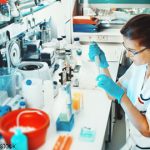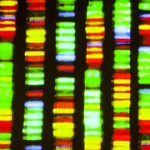NEW YORK (Reuters Health)—An international task force says patients with juvenile idiopathic arthritis (JIA) should be treated to a target of clinical remission, among other new recommendations. “The Task Force is convinced that transferring (the recommendations) into clinical practice will significantly improve the outcomes in patients with JIA,” Dr. Angelo Ravelli of the Istituto G….
TNF Inhibitors May Not Be Linked to Cancer Risk in Kids
NEW YORK (Reuters Health)—Using tumor necrosis factor (TNF) inhibitors in children is not significantly associated with cancer risk, according to a new study. “TNF inhibitors are remarkably effective for the treatment of many autoimmune conditions, but physicians worry that they cause cancer,” Dr. Timothy Beukelman from the University of Alabama in Birmingham told Reuters Health…

Year in Review: Expert Covers 2017’s Key Clinical Findings
In a Year in Review session at the 2017 ACR/ARHP Annual Meeting, Daniel Solomon, MD, MPH, highlighted the latest and most intriguing aspects of clinical research on rheumatic diseases from 2017. His discussion touched on medical therapy, genetics, the effects of bariatric surgery and diet, cancer risk and more…
Juvenile-Onset Arthritis Bodes Worse Pregnancy Outcomes
NEW YORK (Reuters Health)—Women with a diagnosis of juvenile idiopathic arthritis (JIA) are at increased risk of pregnancy complications, according to Swedish researchers. As Dr. Katarina Remaeus told Reuters Health by email, “In our cohort study . . . we found an association with adverse pregnancy outcomes including preterm birth, induction of labor and delivery…

FDA Requests Removal of Opana ER; Plus Abatacept’s New Dosing Option
The FDA has asked the manufactures of Opana ER to remove the opioid from the U.S. market due to the public health risk of abuse…

New Kits Address Pediatric-to-Adult-Care Transition
The transition from pediatric to adult care can be a rocky one. For many rheumatology patients, any problems in the move can cause gaps in care. To address this issue, the American College of Rheumatology (ACR) joined the American College of Physicians’ (ACP) Pediatric to Adult Care Transitions Initiative. The Initiative is a project spearheaded…

MicroRNA Mediates Gene Regulation That Underlies JIA Pathology
Through the use of large-scale transcriptome analysis, researchers have gained insight into the role of innate immunity in juvenile idiopathic arthritis (JIA) pathology. Specifically, transcriptomes of neutrophils in chronic inflammatory states demonstrate extensive network rewiring caused by microRNA, suggesting a role for alternative splicing in JIA pathogenesis…

Large Group Study of Systemic JIA Patients Provides Insight into Disease Pathology
In a large group genetic analysis, researchers identified an association between the class II HLA region, including HLA-DRB1*11, and systemic juvenile idiopathic arthritis (sJIA), implicating adaptive immune molecules in sJIA’s pathogenesis and reinforcing its unique genetic position among JIA subtypes…
Disease Duration, Corticosteroid Use Predict Etanercept Response in JIA
NEW YORK (Reuters Health)—Almost half of juvenile idiopathic arthritis (JIA) patients treated with etanercept achieve minimal disease activity after one year of treatment, according to new findings. Younger patients and those who did not require corticosteroid treatment were more likely to have an excellent response, Dr. Kimme Hyrich of the University of Manchester in the…
Keep Kids on the Move
How to encourage physical activity and exercise in juvenile idiopathic arthritis